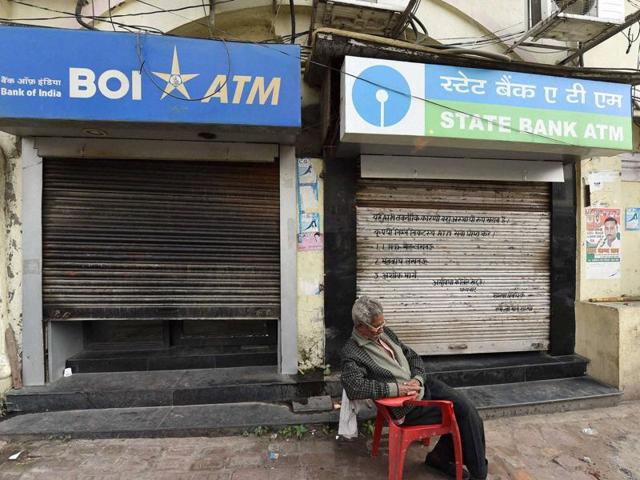Cash crunch, ATM under-utilisation, logistical issues make demonetisation a pain
Three days after the government scrapped the validity of high-value Rs 500 and Rs 1,000 currency notes, banks are finding it difficult to meet the rush in demand for 100 rupee and lower denomination notes.
Three days after the government scrapped the validity of high-value Rs 500 and Rs 1,000 currency notes, banks are finding it difficult to meet the rush in demand for 100 rupee and lower denomination notes.

With only 40-50% of ATMs functioning, customers are disappointed to find long queues outside bank branches and the ATMs in operation. About seven logistics and cash management companies are handed the task to manage 2.2 lakh ATMs with 35,000 trained people and just 8,800 security vans.
“The task still remaining is evacuation of the old notes, which is 75% completed. Now the remaining ATMs should be over by today afternoon. After this, we need to reconfigure the settings in the ATMs so as the change the acceptance of all the four cassettes to 100 rupee notes,” said Navroze Dastur, managing director, NCR India, which manages over 1 lakh ATMs.
Cassettes are small removable boxes that hold all the cash inside an ATM. Each ATM machine has only 3-4 cassettes that can hold cash and at present each is configured to hold Rs 100, Rs 500 (2 cassettes) and Rs 1,000 denomination notes.
Read | Weekend rush for cash jolts banks, ATMs; families out on streets together
Now that Rs 500 and Rs 1,000 notes are invalid, banks are supposed to ensure that their ATMs dispense only Rs 50, Rs 100 and Rs 2,000 notes.
The new Rs 2,000 and Rs 500 denominations are not available yet at ATMs.
ATM managers are trying to reconfigure all cassettes to hold Rs 100 denomination notes. One cassette can hold about 2000-2500 notes. To reconfigure it to the new Rs 2,000 and the old Rs 50 denomination note, ATM providers will need more time once banks can supply them.
The reconfiguration needs to be done because of the different dimensions of the notes. Rs 100 note is: 157 x 73 mm; Rs 500 note size was 167 x 73 mm; and Rs 1,000 note was 177 x 73 mm.
On the other hand, the new Rs 2,000 denomination note is 66 x 166 mm, smaller than the old notes.
Hence, without all cassettes being reconfigured, the ATMs are running with just 10% capacity and banks too have limited cash supply at Rs 2 lakh per ATM.
Read | Notes ready, banks ready, but ATMs? Why the cash dash won’t go away soon
“Configuration of ATMs takes three people that too by going on the ATM site; it cannot be done in the backend. We have already evacuated, now configuration is on and then we will start loading other ATMs. Some we ourselves do it, while some is outsourced. Within 3-4 days, things will become much better,” SBI chairman Arundhati Bhattacharya said.
Clearly, the challenges ahead are short supply of Rs 100 currency notes, under-utilisation of ATM capacity and logistic problems.
Ramaswamy Venkatachalam, MD of India and South Asia, Fidelity Information Services, a company that deploys and manages about 12,000 ATMs, said, “The pace of loading fresh notes is slow as there is shortage of supply of 100 rupee notes. There is also an issue after loading cash into an ATM as it quickly runs out of cash and reloading takes time. In 3-4 days’ times, the logistical problem should ease and we will also have availability of new 2,000 rupee notes.”
A banker said the demand for notes has surpassed the supply and so the cash crunch is keeping a lot of ATMs closed after a few hours of operation.
Bankers foresee a challenge of managing the supply of lower denomination notes as the demand has become multi-fold.
Also Read | Campus ATM and bank queue tales: Fun for some, trouble for others





